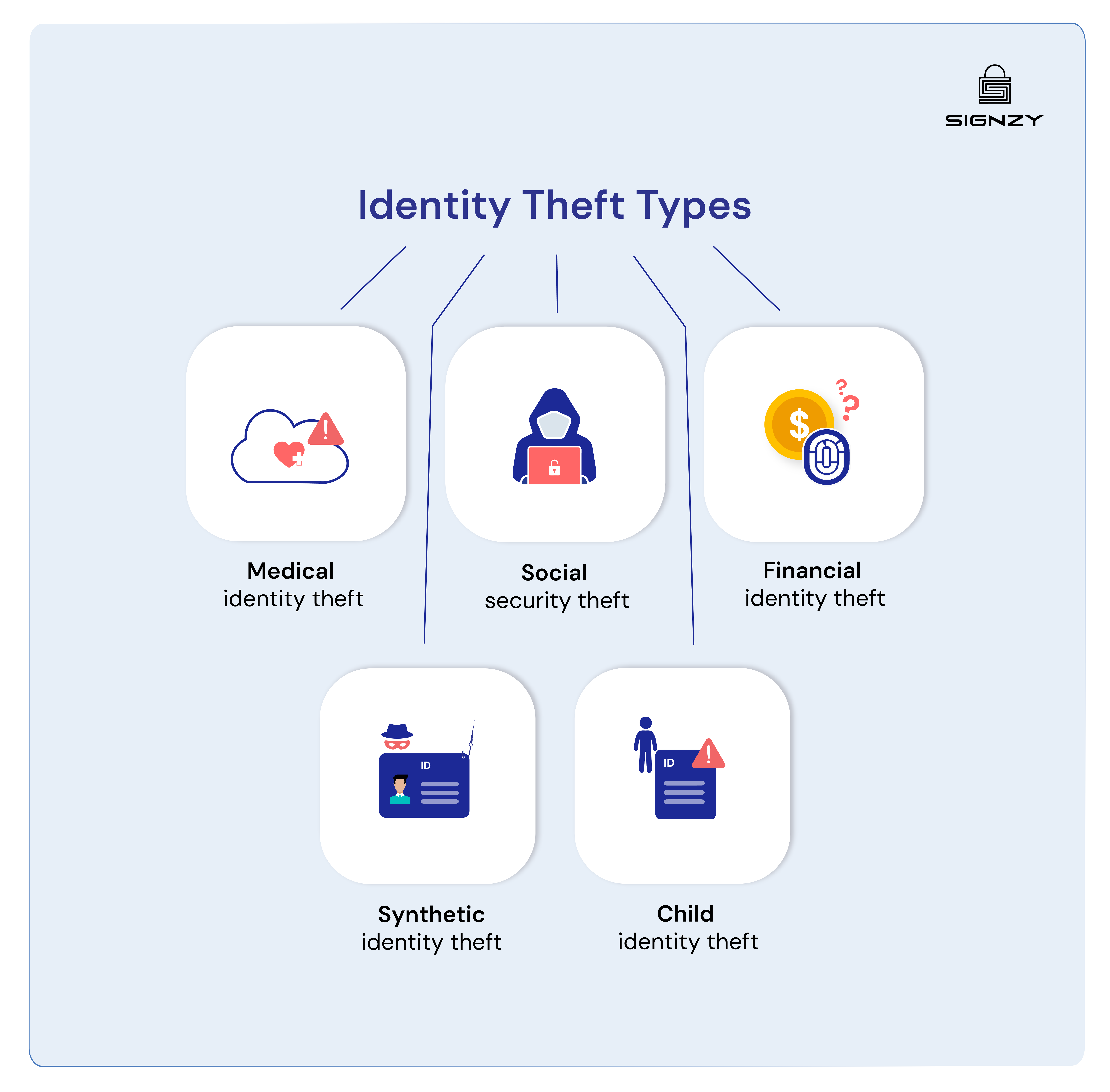What is Identity Theft? ID Theft Types and Prevention
Identity theft is a growing problem in the US and globally. With financial fraud being the most common form of crime connected to identity theft, businesses that deal with their customer’s identification documents need to take extra care to avoid any breaches.
Although they are often used together, identity theft and identity fraud are two separate cases.
Identity theft involves the compromise of a person’s identity. Identity theft is usually caused due to breaches in the securities of businesses or regulatory bodies. Identity theft is just one-half of a bigger, more harmful process. The information stolen by the bad actors is used to commit fraud or sell the information to such entities who would do so.
Identity fraud is the second half of the crime. Here, the stolen identity is used to avail of loans, use the affected person’s finances, or further breach the affected person’s security and steal more of their personal information. Essentially, identity fraud is the misuse of a person’s stolen personal information for the benefit of the criminal, usually at the cost of the original owner of the information.
💡 Related Blog:
Identity theft takes place in many forms, let’s take a look at their types to be better prepared to counter them.
Identity Theft Types
Here are the various types of identity theft that can lead to losses for the customers of a business:

Medical Identity Theft
Under medical identity theft, a criminal might steal the identification information of another person to use their insurance information and avail of medical services at reduced costs or free of cost.
Social Security Theft
Victims of Social Security identity fraud find their SSN misused by bad actors to misuse government funds and benefits. A common identity theft example associated with SSN includes the criminal filing of taxes using stolen information to claim tax credits or misusing government benefits like food stamps and stimulus checks using stolen SSN.
Financial Identity Theft
Financial identity theft involves stealing a person’s banking credentials to misuse them and gain financially at the cost of the victim. A common form of financial identity fraud is known as ghost loans. Ghost loans are false loans taken by criminals using identity documents that belong to them. Ghost loans negatively affect the credit score of the person whose identity is misused.
Synthetic Identity Theft
Synthetic identity theft is one of the more modern forms of identity theft which involves using parts of a stolen identity and creating a new, false identity by adding details to the stolen information. This newly created identity is then used by bad actors to commit crimes under false names and divert the law’s attention to finding a person who doesn’t exist.
Child Identity Theft
Child identity theft involves stealing the identity information of an underage person. The stolen information is then used to commit financial fraud or other criminal activities. The victims of this crime often don’t know that their information is being misused due to a lack of awareness and can also cause problems with their employment as they often end up with criminal records associated with their identities.
As you can see, identity theft and fraud can exist in many forms, which is why businesses need to be more careful and vigilant with their identity databases. Apart from improving the security of their databases, businesses can also employ certain measures in their regular operations to flag and catch bad actors, should their information be compromised.
Related Solutions
How Signzy Helps Businesses Fight Identity Theft and Identity Fraud
As digitization becomes a quickly growing phenomenon, bad actors often try to breach the databases of businesses to steal the identities of their customers and misuse them. According to a report by identitytheft.org, the market size of identity theft protection services is expected to reach $28 billion by 2029. This rise is in response to the growing threat of identity theft globally.
While improving the security of the business is one way to avoid such problems, businesses also need to proactively install measures in place to flag any instances of identity theft, should such an unfortunate event occur.
A robust KYC verification process, powered by Signzy, helps in stopping false identities from being used in the first place. This can reduce the number of accounts created using false identity documents, as well as the disbursal of financial services to individuals using the stolen identities of existing customers.
Apart from KYC verification, Signzy also has an API marketplace with salient tools like SSN Verification API, and DL Verification API, that can help businesses reduce the cases of use of false identity documents. We also have Face Match and Liveness Check APIs to further reinforce the ID document submission process.
So book a demo with Signzy and give your customers a more secure experience.
Conclusion
The total losses due to identity theft stand close to $10.2 billion. As identity theft and identity fraud become a growing threat, the coin of responsibility has two sides. On one side are the businesses that need to provide a safe platform for their customers. On the other side of the coin are the customers who need to be more careful with their identifications and more aware of how their online presence is used or misused.
- According to a report by identitytheft.org, the market size of identity theft protection services is expected to reach $28 billion by 2029. This rise is in response to the growing threat of identity theft globally.
- Out of the 5.7 million cases of fraud reported to the FTC, 1.4 million were cases of identity theft.
- The total losses due to identity theft stand close to $10.2 billion.
FAQ
What is identity theft?
What are the first signs of identity theft?
How do I check if someone is using my identity?

Tanya Narayan
Tanya is a Product Marketing Manager at Signzy and a GrowthX Fellow, with a strong focus on SaaS and fintech. She specializes in go-to-market strategy, customer research, and positioning to help teams bring products to market effectively. She has also cleared the Company Secretary foundation level, reflecting her grounding in corporate and compliance fundamentals.


